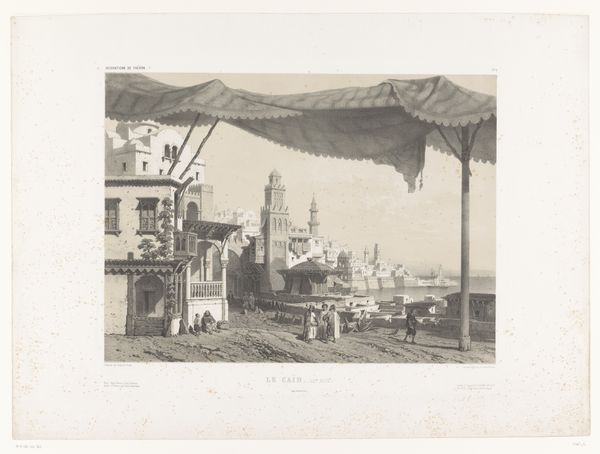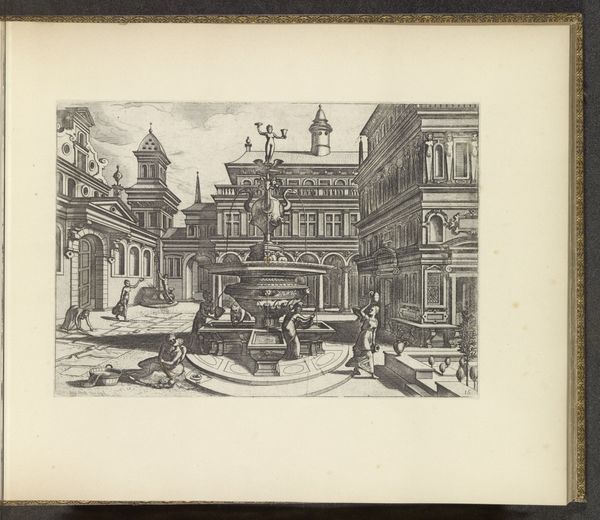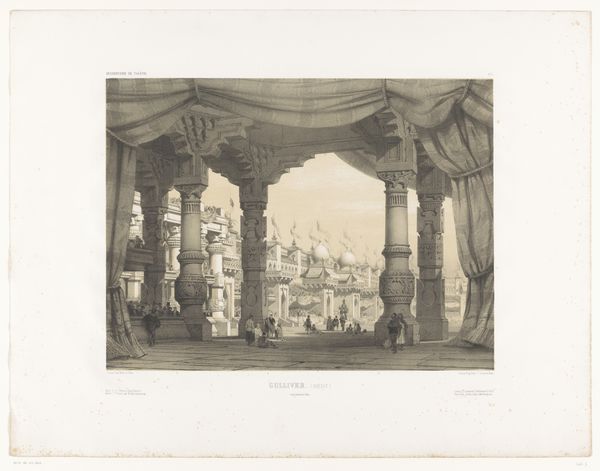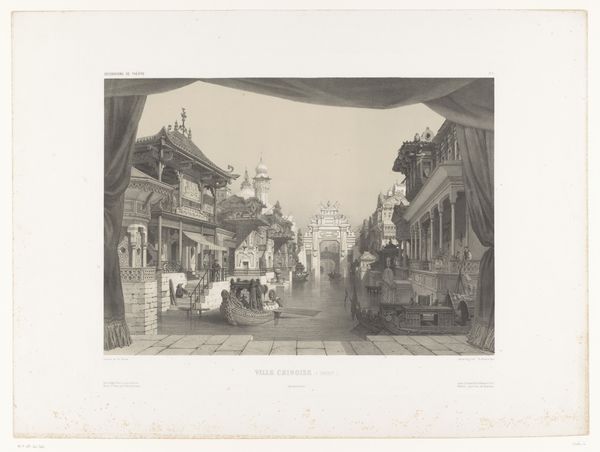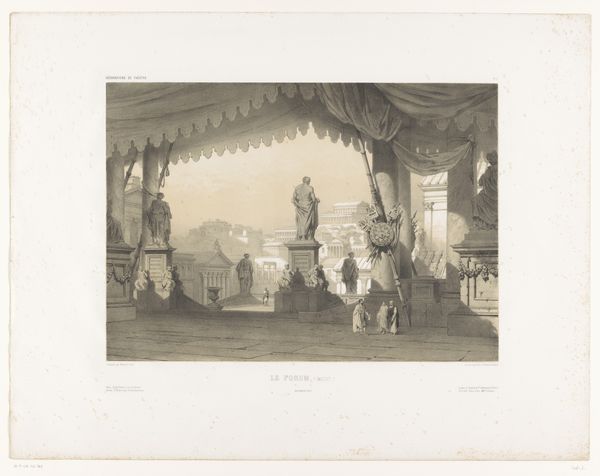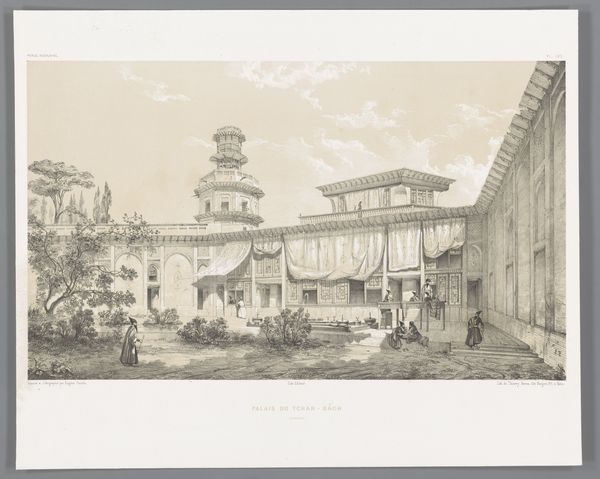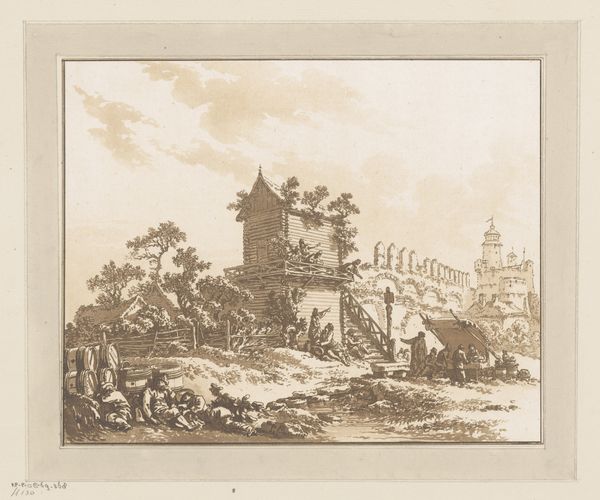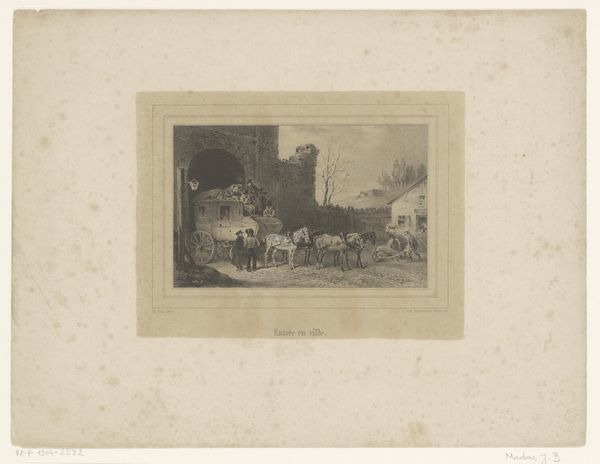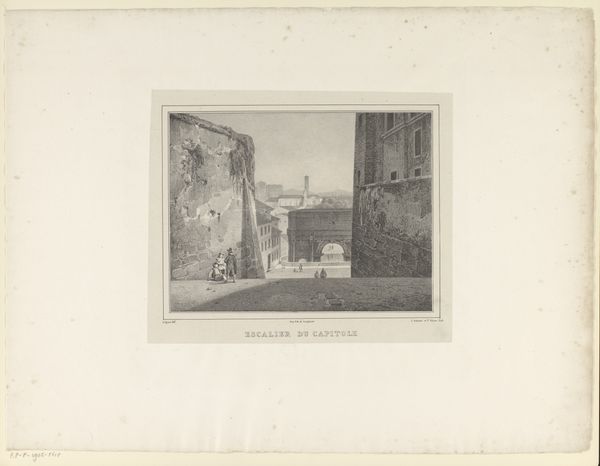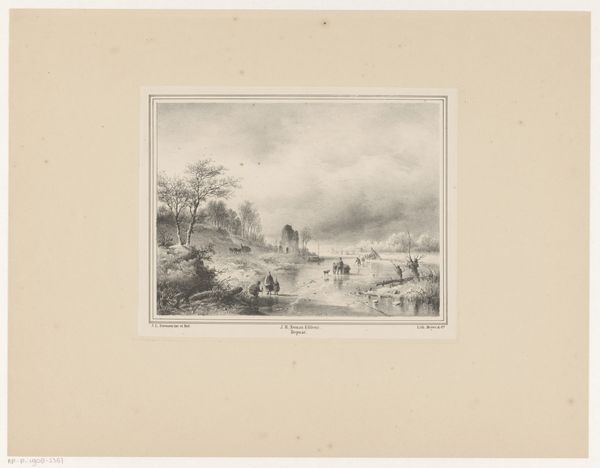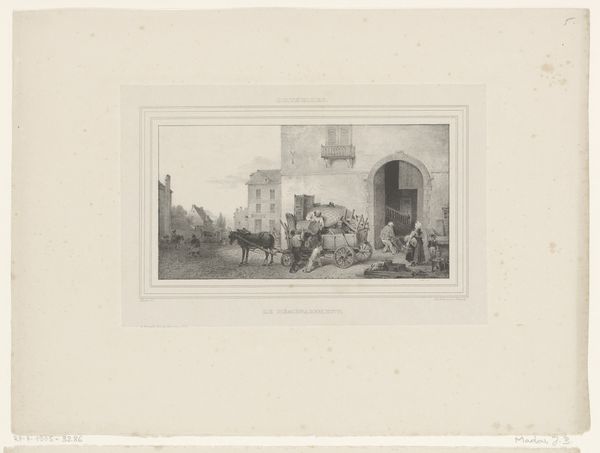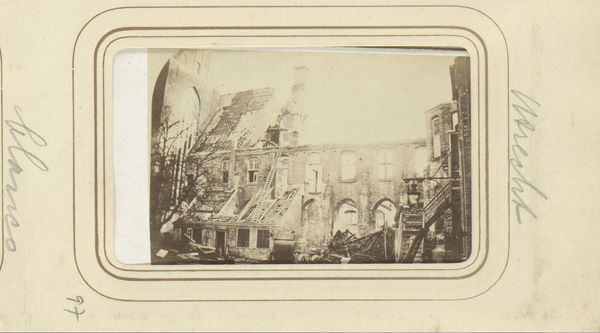
Theaterdecor voor de eerste acte van het stuk Zerline (of La corbeille d'oranges) 1854 - 1858
0:00
0:00
Dimensions: height 524 mm, width 710 mm
Copyright: Rijks Museum: Open Domain
Curator: This engraving from sometime between 1854 and 1858 by Eugène Cicéri is titled, "Theaterdecor voor de eerste acte van het stuk Zerline (of La corbeille d'oranges)." It depicts a bustling marketplace scene, likely the set design for an opera's first act. What stands out to you initially? Editor: The light. It's filtered and theatrical, even though the scene suggests reality. Those layers of veiled illumination add an otherworldly tone to something that’s supposed to represent a daily event like a market. It suggests a deeper, symbolic narrative unfolding beneath the surface. Curator: And the making of this print underscores the performative. We should notice how the layering of the engraving upon an earlier watercolor gives real depth and texture to this urban prospect. That superimposition mimics the many strata of stagecraft – costume, set, lighting—contriving to fashion a fleeting illusion of Baroque city life, that in the end, reduces to mere ephemeral entertainment. Editor: That's fascinating! Speaking of Baroque, there’s that church dome barely visible in the distance. It acts as a cultural anchor, maybe connecting the fictional stage world with grander concepts of spirituality and enduring civic virtue. Perhaps it hints at something greater being at stake for the opera’s characters? Curator: Possibly. Although this print, like many produced for theater, was less about grand concepts and more about the consumable spectacle. Prints like these acted as marketing tools to entice middle-class audiences by emphasizing lavish spectacle. Editor: Well, you can definitely see the spectacle. Even details like the vendors, with their wares meticulously displayed under small umbrellas, it all contributes to a dense and rather persuasive image. But tell me, does that drama, or the labor behind constructing that drama, register on a more conceptual level? Is there any critique of these representations? Curator: The work, fundamentally commercial and reproductive, does not invite such conceptual meditations on the social apparatus. By design, it reinforces consumer desires through crafted, digestible experiences. The image normalizes a kind of theatricality as a desired, upper-middle class good. Editor: That is an unexpectedly cynical but clarifying perspective. In that case, I will remember this elaborate scene as a cultural artifact, a little world meant not just to be looked at but to be felt. It provides such insight into the power of symbols to not only entertain but to define collective hopes and dreams. Curator: Precisely, by examining the artwork’s production and how it circulated, we glean insight into the machinery of cultural value back then.
Comments
No comments
Be the first to comment and join the conversation on the ultimate creative platform.
